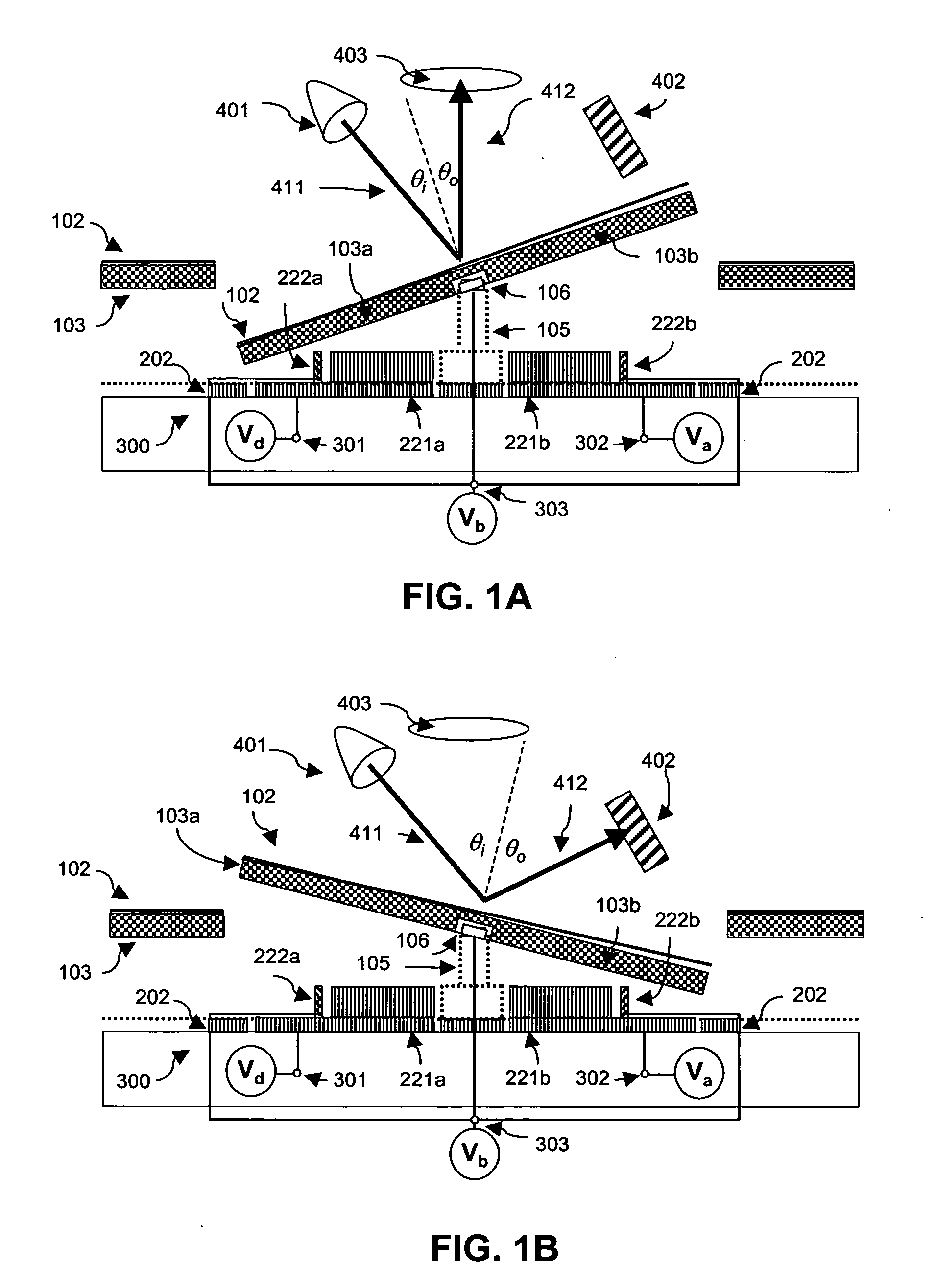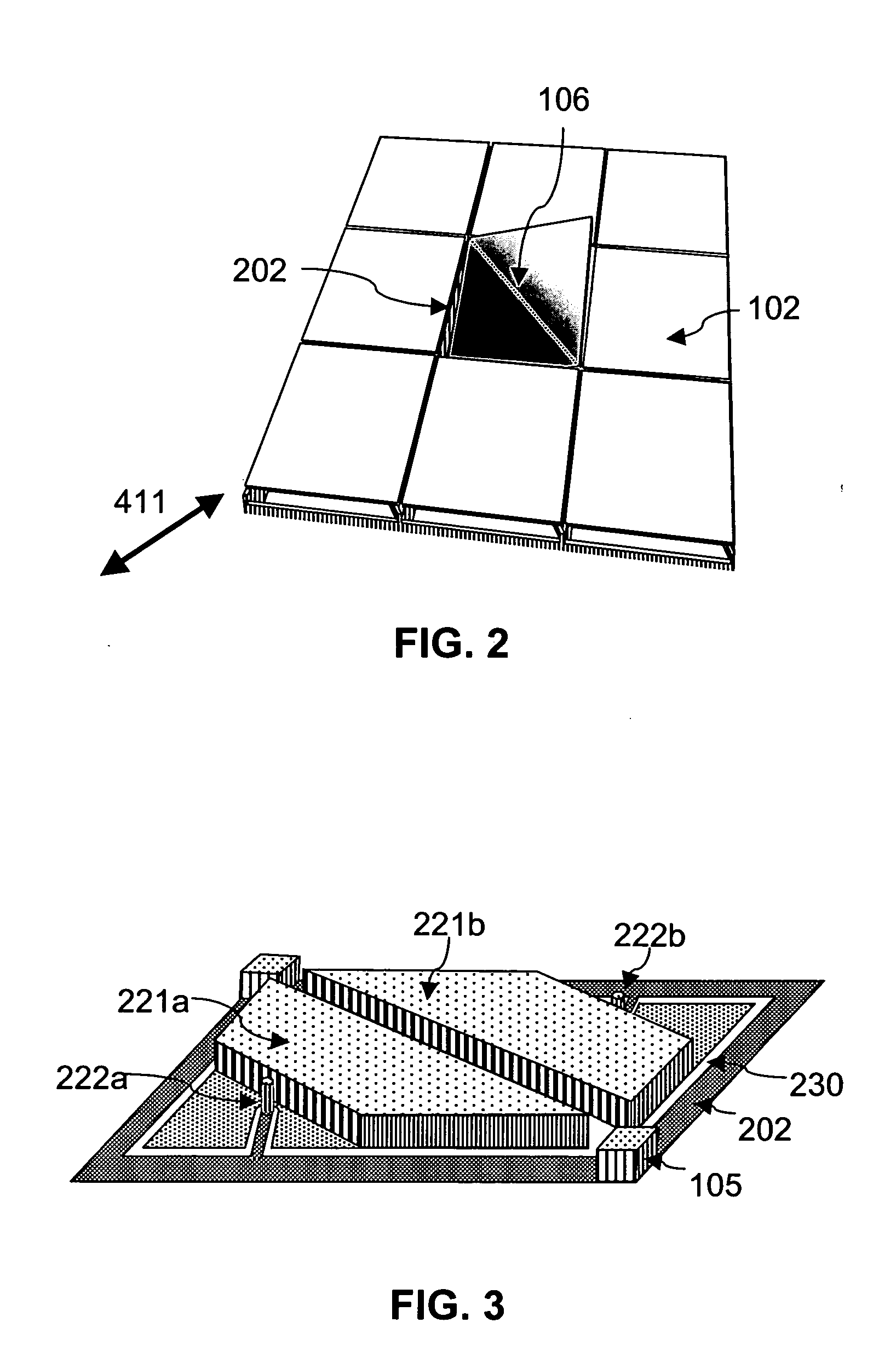High contrast spatial light modulator and method
a spatial light modulator and high contrast technology, applied in the field of micromirror arrays, can solve the problems of low brightness, low contrast ratio of projected images, low brightness of early slm in video applications, etc., and achieve high contrast, good mechanical properties, and enhance optical reflectivity
- Summary
- Abstract
- Description
- Claims
- Application Information
AI Technical Summary
Benefits of technology
Problems solved by technology
Method used
Image
Examples
Embodiment Construction
[0035] A high contrast spatial light modulator (SLM) for display and printing is fabricated by coupling a high active reflection area fill-ratio and non-diffractive micro-mirror array with a high electrostatic efficiency and low surface adhesion control substrate.
[0036] A cross-sectional view of a part of the spatial light modulator according to one embodiment of the present invention is shown in FIG. 1a, as the directional light 411 from illumination source 401 forms an angle of incidence θi. Deflected light 412 has an angle of θo, as measured in the normal direction of a micro-mirror array. In a digital operation mode, this configuration is commonly called the “on” position.
[0037]FIG. 1b shows a cross section view of the same part of the spatial light modulator while the mirror plate is rotated toward another electrode under the other side of the hinge 106. The directional light 411 and deflected light 412 form much larger angles θi and θo. These angles are a function of the dim...
PUM
 Login to View More
Login to View More Abstract
Description
Claims
Application Information
 Login to View More
Login to View More - R&D
- Intellectual Property
- Life Sciences
- Materials
- Tech Scout
- Unparalleled Data Quality
- Higher Quality Content
- 60% Fewer Hallucinations
Browse by: Latest US Patents, China's latest patents, Technical Efficacy Thesaurus, Application Domain, Technology Topic, Popular Technical Reports.
© 2025 PatSnap. All rights reserved.Legal|Privacy policy|Modern Slavery Act Transparency Statement|Sitemap|About US| Contact US: help@patsnap.com



